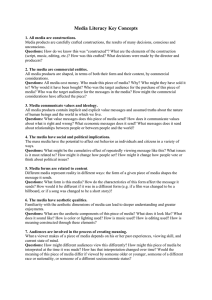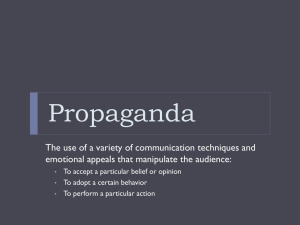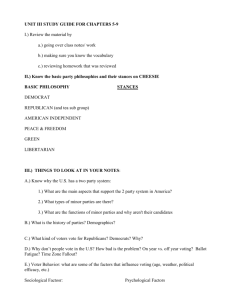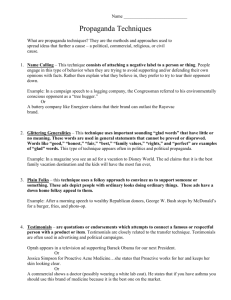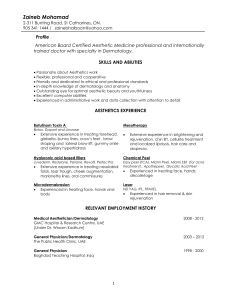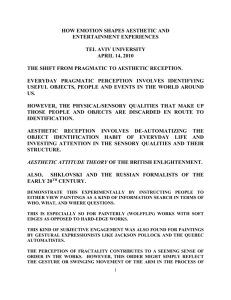Reading the Media (handouts)
advertisement
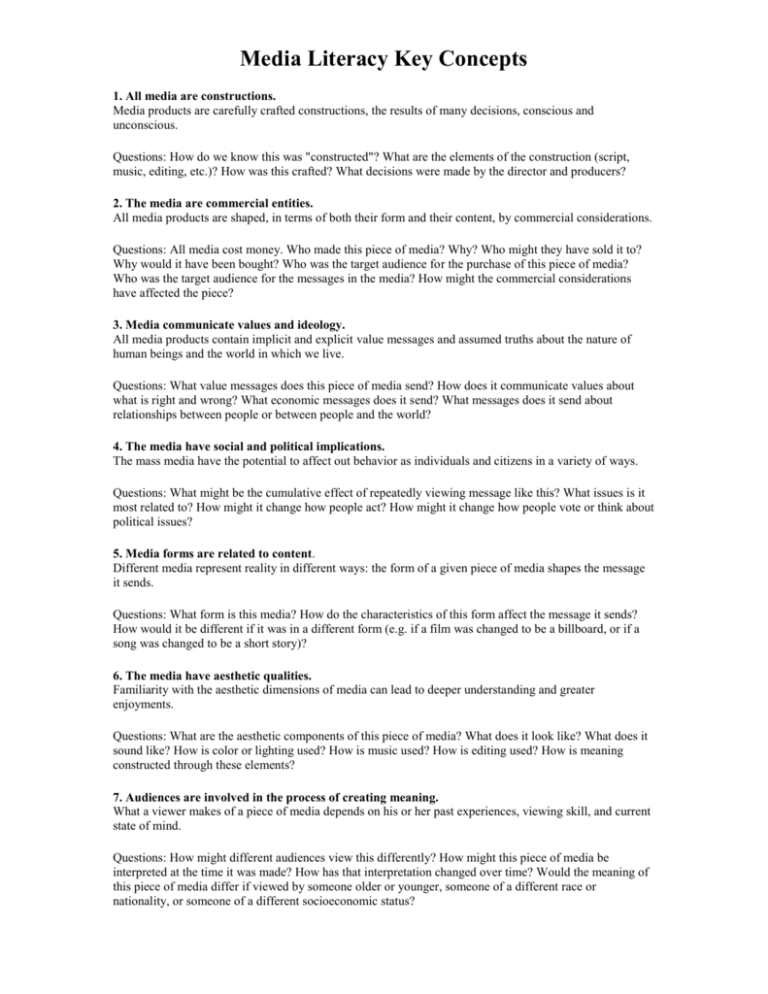
Media Literacy Key Concepts 1. All media are constructions. Media products are carefully crafted constructions, the results of many decisions, conscious and unconscious. Questions: How do we know this was "constructed"? What are the elements of the construction (script, music, editing, etc.)? How was this crafted? What decisions were made by the director and producers? 2. The media are commercial entities. All media products are shaped, in terms of both their form and their content, by commercial considerations. Questions: All media cost money. Who made this piece of media? Why? Who might they have sold it to? Why would it have been bought? Who was the target audience for the purchase of this piece of media? Who was the target audience for the messages in the media? How might the commercial considerations have affected the piece? 3. Media communicate values and ideology. All media products contain implicit and explicit value messages and assumed truths about the nature of human beings and the world in which we live. Questions: What value messages does this piece of media send? How does it communicate values about what is right and wrong? What economic messages does it send? What messages does it send about relationships between people or between people and the world? 4. The media have social and political implications. The mass media have the potential to affect out behavior as individuals and citizens in a variety of ways. Questions: What might be the cumulative effect of repeatedly viewing message like this? What issues is it most related to? How might it change how people act? How might it change how people vote or think about political issues? 5. Media forms are related to content. Different media represent reality in different ways: the form of a given piece of media shapes the message it sends. Questions: What form is this media? How do the characteristics of this form affect the message it sends? How would it be different if it was in a different form (e.g. if a film was changed to be a billboard, or if a song was changed to be a short story)? 6. The media have aesthetic qualities. Familiarity with the aesthetic dimensions of media can lead to deeper understanding and greater enjoyments. Questions: What are the aesthetic components of this piece of media? What does it look like? What does it sound like? How is color or lighting used? How is music used? How is editing used? How is meaning constructed through these elements? 7. Audiences are involved in the process of creating meaning. What a viewer makes of a piece of media depends on his or her past experiences, viewing skill, and current state of mind. Questions: How might different audiences view this differently? How might this piece of media be interpreted at the time it was made? How has that interpretation changed over time? Would the meaning of this piece of media differ if viewed by someone older or younger, someone of a different race or nationality, or someone of a different socioeconomic status? Why teach media in our classrooms? Success for All Many students who struggle with traditional school tasks can be successful in media analysis, and their improved self-esteem carries over into other curricular areas. Contextualized Instruction Reading the media allows us to contextualize content by connecting it to messages students see in their life outside the classroom. Critical Thinking The close observation critical thinking involved in the analysis of media messages mirrors the thinking we do in all curricular areas. Informed Citizens for Democracy A functioning democratic society requires media-savvy citizens. Values Clarification and Self-esteem We need practice in asking values questions, as the relationship between school content and citizenship often requires value judgments. Writing the Media The expression of ideas has always required media tools, and successful communication in the 21st century requires ‘writing’ in new media forms. 10 Easy-to-Implement Media Literacy Activities 1. Compare book and movie versions of a scene 2. Create an ad for a real or imagined product for a particular audience 3. Analyze a weight loss ad (See also Dove Evolution ads on the construction of beauty) 4. Find continuity or anachronism errors in a film (many examples online) 5. Change the music or the narration in a piece of media and see the effects 6. Analyze political propaganda (WWII propaganda and/or current political ads) 7. Analyze Facebook or Instagram images and discuss the construction of identity 8. Compare a newspaper article and a TV news report on the same topic 9. Create a spoof ad (see Adbusters Spoof ads) 10. Find examples of misleading graphs and/or science in the media
